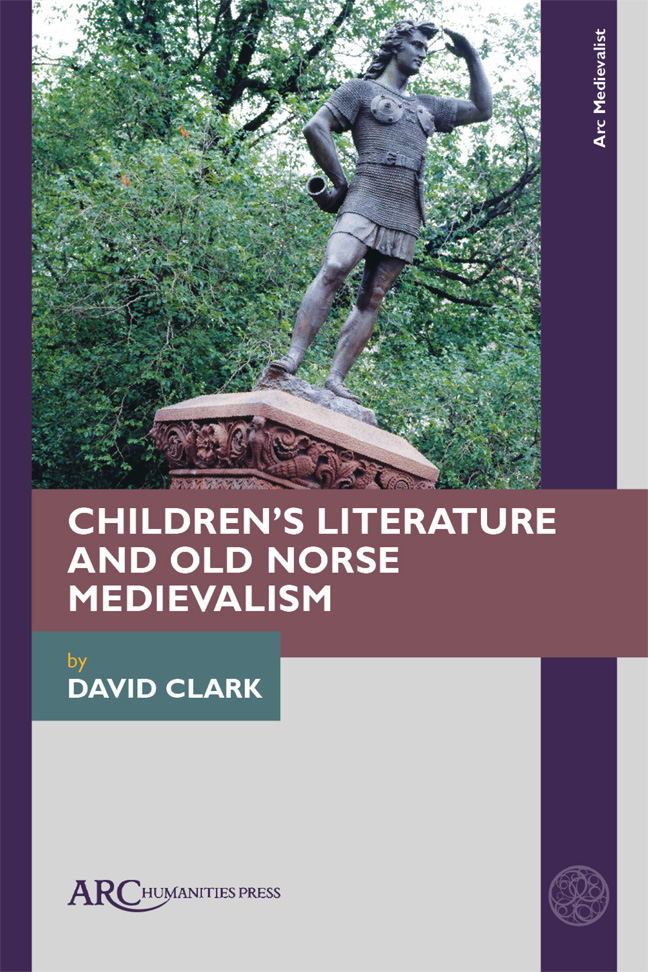Book contents
- Frontmatter
- Contents
- Acknowledgements
- Dedication
- Introduction: The End
- 1 Age-Related Categories
- 2 Generic Categories
- 3 Transformational Fantasy
- 4 Horned Helmets and Comic Anachronism
- 5 Viking Reputation
- 6 Runes and Magic
- 7 The Power of Story
- 8 Race and Ethnicity
- 9 Heroism
- 10 Viking Masculinity
- 11 Viking Femininity
- 12 Viking Sex and Gender
- 13 Bowdlerization
- 14 Sexuality
- 15 Ecological Threat
- 16 Norse Medievalism in Alan Early's Father of Lies Trilogy
- 17 Avoiding the End of Days: K. L. Armstrong and M. A. Marr's Blackwell Pages
- 18 Rick Riordan's Magnus Chase Series and Norse Medievalism
- Conclusion
- Select Bibliography of Frequently Cited Works
- Index
14 - Sexuality
Published online by Cambridge University Press: 17 February 2024
- Frontmatter
- Contents
- Acknowledgements
- Dedication
- Introduction: The End
- 1 Age-Related Categories
- 2 Generic Categories
- 3 Transformational Fantasy
- 4 Horned Helmets and Comic Anachronism
- 5 Viking Reputation
- 6 Runes and Magic
- 7 The Power of Story
- 8 Race and Ethnicity
- 9 Heroism
- 10 Viking Masculinity
- 11 Viking Femininity
- 12 Viking Sex and Gender
- 13 Bowdlerization
- 14 Sexuality
- 15 Ecological Threat
- 16 Norse Medievalism in Alan Early's Father of Lies Trilogy
- 17 Avoiding the End of Days: K. L. Armstrong and M. A. Marr's Blackwell Pages
- 18 Rick Riordan's Magnus Chase Series and Norse Medievalism
- Conclusion
- Select Bibliography of Frequently Cited Works
- Index
Summary
CONTRARY TO THE impression given by some historians (particularly historians of friendship), medieval literature indicates both a surprising degree of latitude in fields of desire and also an understanding that some men and women were exclusively attracted to the same sex. People in the Middle Ages certainly practised a similar range of sexual activities to those that exist today. Sexuality was not, of course, configured in precisely the same way as it tends to be today, and medieval representations of sexual desire and sexuality are not homogeneous, any more than they are today.
Lesbian-like histories, as Judith Bennett has termed them, are much less visible than examples of male homosexuality, and the latter often appears in homophobic discourse. Still, since the late twentieth-century, scholars have recognized that same-sex desire is accepted as normative in certain cultural contexts. In Old Norse society, same-sex activity may be viewed in deeply gendered terms. For instance, the discourse of níð and ergi attaches stigma to a man who takes the receptive role in anal intercourse, but no such shame is attributed to the insertive partner. Such dynamics are visible in sagas such as Gisli's saga, and attitudes seem to have been more liberal in the pre-Christian period. This research has not yet had much visible impact on medievalist fiction, and where sexuality is linked to medieval culture, this can have unexpected effects, as we’ll see in the chapter below on Rick Riordan's Magnus Chase series.
Overt sexuality has been largely invisible in children's literature until very recently, and here we can see most clearly the effects of publishing norms and cultural expecta-tions. Sexual behaviour and queerness are not uniformly censored any more, in the UK or the US, but, as we have seen in the previous chapter, there is a tendency to view such content as not “appropriate” for non-adult audiences and it tends to be elided along with un-approved language unless it is the central concern of the book (often as a “problem novel”). There is obviously no intrinsic reason to exclude what is sometimes termed “adult” or “mature” content from work for children—views about what is appropriate for children to know (and at what ages) vary from culture to culture.
- Type
- Chapter
- Information
- Children's Literature and Old Norse Medievalism , pp. 117 - 124Publisher: Amsterdam University PressPrint publication year: 2023

